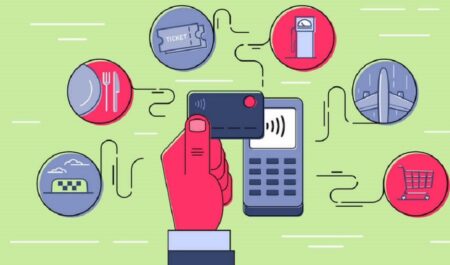The cashless economy is NOT coming, repeat: not coming. It's here and will get bigger and bigger, but ... cash is here to stay.
THE cashless economy will never be entirely cashless, but, according to the Australian Banking Association, the use of digital wallet payments on smartphones and watches has soared from $746 million in 2018 to over $93 billion in 2022.
About $37 billion of that $93 billion is spent by using digital wallets on mobiles and watches.
At the end of 2022, cash only accounted for 13 per cent of consumer payments in Australia. That was 70 per cent in 2007.
Australia is now among the top users of cashless payments in the world, bigger than the United States and European countries.
The COVID pandemic, blamed for so many things already, is really the point where cashless transactions took off in Australia, when consumers and retailers were reluctant to handle potentially infected notes and coins.
But if you are a staunch mainly-cash user and deplore how cash gets used less and less, that doesn’t necessarily mean you are blameless. The move towards a cashless society started in the nineteenth century, would you believe. Chances are you were a small part of that history.
Slate, charge accounts and credit cards
The relentless drive to the cashless economy probably started with the discovery of slate, but discounting slate as an enabler, it’s the credit card where it all began.
The earliest and oldest forms of credit cards in Australia were charge coins. These were introduced late in the 19th century.
They were issued by businesses to be used to buy things sold by these businesses only. They replaced the slate, you might say.
The customer’s charge account number was embossed on the charge coin to make imprinting on sales slips easy.
Charge coins were replaced by charge plates in the 1930s. The customer’s address, name, account number, and in some cases even their signature were included as a fraud prevention measure.
The first attempt by a bank to issue cards that can be used at more than one merchant store was the Charge-it card developed by banker John Biggins in 1946. It was issued by the Flatbush National Bank of Brooklyn in New York.
Next in line were Diners Club (1950), which could be used in participating restaurants, and the BankAmericard. In 1965, BankAmericard could be used in the whole of the United States. Today, it is still around under the better-known name of VISA.
Australia had to wait until 1974 for a joint effort by local banks to produce Bankcard, which was launched by Prime Minister Gough Whitlam.
Credit cards are regulated by the Reserve Bank of Australia under the Payment Systems Regulation Act 1998.
Online credit
This Act is now under review to make sure it can cope with the changes wrought by digital payment arrangements.
The relentless march of technology has produced myriad innovative platforms from mobile, digital wallets (provided by Google and Apple) to buy-now-pay-later schemes, a digital raincheck system, if you like.
Buy-now-pay-later-schemes increased by almost 80 per cent in 2019 and continue to grow by more than 30 per cent a year.
The review now under way is a re-run really. When credit cards made their debut in Australia in 1974, there were hardly any safeguards for consumers. This led to card users being hit with high interest rates on money owed, sneaky fees and aggressive marketing tactics.
A review of regulation back then put in place the safeguards cardholders enjoy today.
Today, regulation forces disclosure of interest rates, fees and charges and guides advertising. The idea is to apply the same regulation digital payment systems.
Like it or not, cash will continue to make way for digital payments. But if you’re a fan of cash, the consolation is that the Reserve Bank has said that cash is here to stay.
Like it or not, cash will continue to make way for digital payments. But if you’re a fan of cash, the consolation is that the Reserve Bank has said that cash is here to stay.
